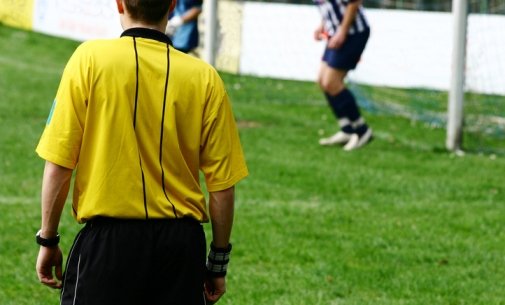
Coaching Soccer 101
Rules

There are seventeen rules or "Laws" in soccer. Most of the rules
get modified for youth soccer but can vary from league to league. Here is
a quick reference of themodified laws. You will need to contact your league
administrator for an "official list of rules and modifications" for your
area.
Law 1. Field Dimensions. Modified for youth to promote
lots of touches. Fields can be 20' wide X 30' long for micro soccer and
up to 70' wide X 110' long for 11v11 games.
Law 2. Balls size. A #3 is used for players U6 to U9. A
#4 for players U10 to U12. U13 and up use a #5.
Law 3. Number of players. Modified from 3 players to 11
(see micro soccer page for breakdown).
Law 4. Player's equipment. Shin guards with socks that
completely cover Shin guards. No jewelry and no baseball cleats because
the front cleats stick out.
Law 5. Referees. Modified. The referee's main concern is
the safety of the players. The ref enforces all the rules of the game. Most
3v3 leagues do not use a referee.
Law 6. Assistant referee. In 11v11 games there are two
assistants helping the referee control the game.
Law 7. Duration of the game. Modified. The official time
is two 45-minute halves. With youth leagues it can range from two 20 min.
halves up to 45. Some leagues have 4 12-minute quarters which is the time
recommended for micro soccer.
Law 8. Start of play. The kick off is taken at the center
spot and is determined by a coin toss. The ball has to move forward to start
the half. Each player must be in his or her half of the field and at least
ten yard away from the ball. If a referee has to do a drop ball, the play
resumes when the ball hits the ground.
Law 9. Ball in and out of play. The ball is out of play
when it COMPLETELY goes over the goal line or touch-line. It doesn't matter
whether it's in the air or on the ground.
Law 10. Method of scoring. The ball must COMPLETELY go
across the line into the goal.
Law 11. Off sides. One of the most complicated laws of
the game. Most leagues don't apply off sides till they start playing 11
V 11. The basic concept is that a player must have at least one defender
(not including the goalkeeper) between him and the goal WHEN the ball is
played to him. Also to be offside the player must be in the opponents side
and looking to gain an advantage.
Law 12. Fouls and Misconduct- At the youth level most fouls
are due to pushing, holding or tripping and result in a free kick. Other
ones to watch out for are handballs and charging.
Law 13. Free kicks. There are two types. A direct and indirect.
At the youth level most free kicks are classified as indirect. This means
a goal may not be scored until the ball has been played or touched by a
second player of either team.
Law 14. Penalty Kick- If a play commits a foul in their
own penalty area a Penalty kick will be awarded. The kick is taken twelve
yards out from the goal. I highly recommend that penalty kicks not be called
in the micro soccer leagues.
Law 15. Throw in. The thing to teach your players is both
feet have to be on the ground, must have two hands on the ball, and the
throw must come from behind the players head. The penalty for a bad throw
in is that the opposing team get the ball. Some leagues don't enforce this
rules or give the player two chances.
Law 16. Goal Kick. A goal kick is granted when the attacking
team kicks the ball over the goal line. The kicker may not touch the ball
again until it has left the penalty area and has been touched my another
player on either team.
Law 17. Corner Kick. A corner kick is awarded when the
defending team kicks the ball over their own goal line. A goal may be scored
directly from a corner kick.
Slightly more indepth rules pdf download.


